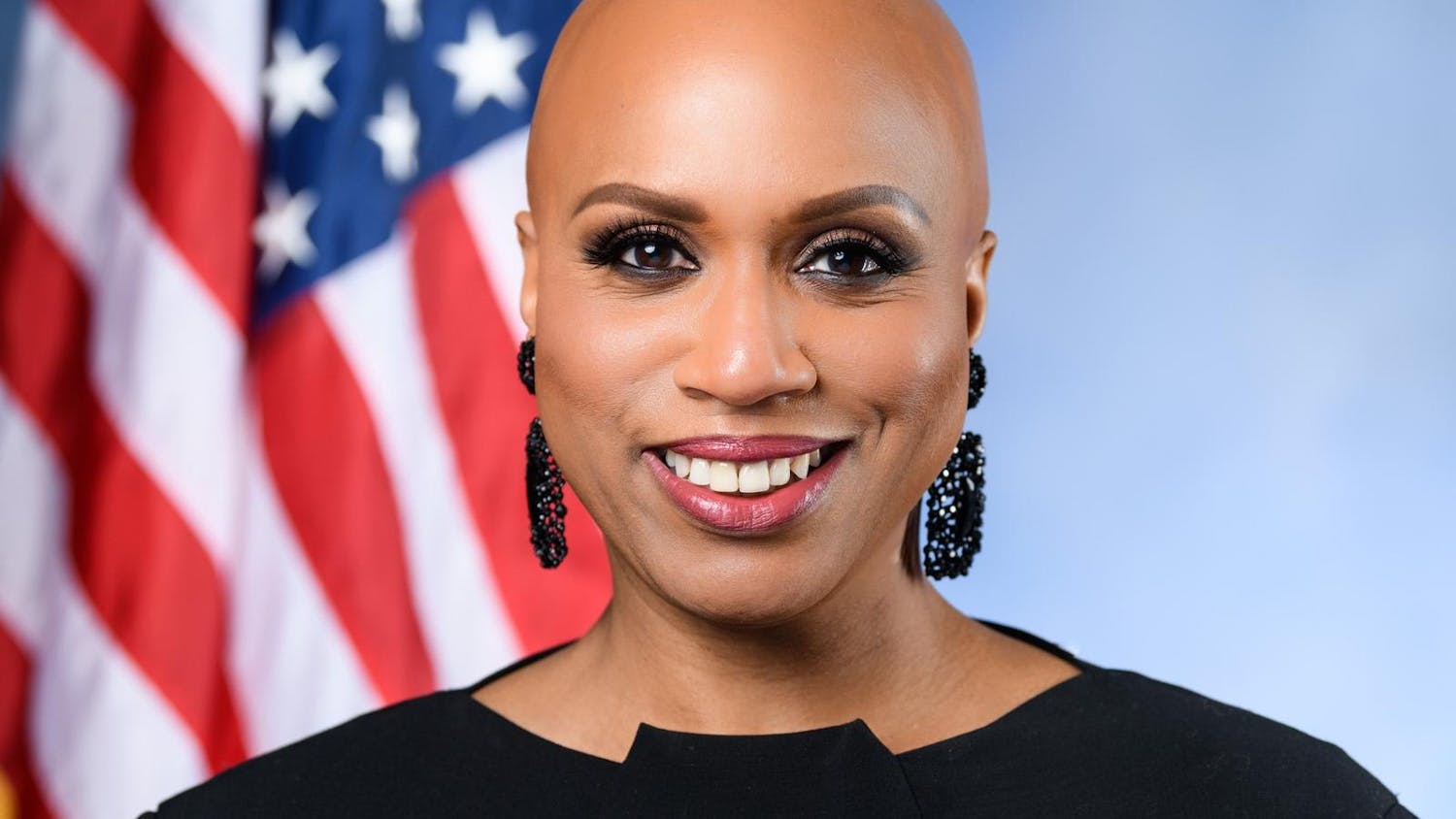Off the main entrance looms the work of famous Chinese artist Cai Guo-Qiang. A student's hiking journey is memorialized on the walls upstairs. And in the basement, a virtual chef can make you a pizza modeled after the globe. Every once in a while, he is shot dead.
It has been seven months since the $38 million Perry and Marty Granoff Center for the Creative Arts opened its shining glass doors and began filling its halls with art. Since its opening, it has housed classes, lectures, exhibits and events.
This semester, the building — which has four flexible-use studios, two media labs and an auditorium — hosts 14 classes across seven departments. The building also features a recording studio, a traditional classroom and small sitting areas called "living rooms" off each stairwell landing.
ENGN 0120D: "Strategies for Creative Process: Design Topics" takes advantage of the most unique aspect of the building's design — its staggered floors. In the class, students work through many iterations of a project, moving between the physical and multimedia labs that are connected by a glass wall.
"By looking into other spaces, you get ideas," said Ian Gonsher, professor of engineering and former professor of visual art. "It's an embodiment of the open curriculum, and it's changing the creative culture at Brown."
Students and faculty alike celebrated the energy in the building and its external beauty. "It has an atmosphere of optimism. People come in and often smile and see the creative opportunities that are here," said Richard Fishman, professor of visual art and director of the Creative Arts Council, who has been involved with the center since the beginning of its planning 10 years ago.
"When I go inside, I feel like I need to do something creative," said Mat Kelley '14, who intends to concentrate in visual art. "It's so strong. You go in, and there's a very vibrant environment."
Charlie Kannel '14, who often picnics on the grass in front of the building, said, "It's just really beautiful from the outside. I think everyone can appreciate that."
Kannel, who plans to concentrate in environmental studies, said he is excited about the building's sustainability-oriented features, which include a temperature-regulating green roof and windows that help the building conserve electricity. "I appreciate that it represents the University's commitment to building more sustainable buildings with aspects of environmental design," he said.
Though students enjoy the idea and energy of the building, some have complaints about specific aspects of the rooms. Joe Rim '12, a music concentrator, said the building does not provide what the traditional musicians on campus are hoping for, though the technology housed in the building is great for electronic musicians. "Everyone just really wants a concert hall," he said.
A concert hall was in the original plan for the building, but limits on the land and available funds made it impossible to build, Fishman said. In the early stages of planning, faculty members of the arts departments had to make a choice between improving their own facilities and creating the new center. "They agreed to give up something, to be a part of something bigger," he said.
As an a cappella singer, Rim was disappointed with the acoustics of the Martinos Auditorium. "It tends to eat sound from your own perspective. That feedback is essential to hear yourself and correct for mistakes and changes in pitch," he said.
The acousticians who worked on the auditorium will adjust the sound in the near future, possibly over winter break, Fishman said. He said the lights, which are motion-activated and sometimes turn on while students are watching presentations in the dark, will also be adjusted.
Chira DelSesto, assistant director of the Creative Arts Council, attributed difficulties with the building's features to "growing pains," she said. "When we opened, we were pretty much a construction zone. We're in a little better shape, and things seem to be working more consistently."
Many students said the center is less accessible than they had hoped.
Dominic Wu '12 lamented the difficulty of reserving rooms. He said when he tries to reserve the auditorium for his a cappella group, the Higher Keys, the room is "always booked."
Students can reserve any space in the building, but the center is entirely booked for fall, said DelSesto.
None of the groups who do have access to the spaces this semester should get too comfortable. "The core concept of the building is that it isn't anybody's home space," DelSesto said. "In order for the program to stay fresh, we can't have the same things here all the time."




